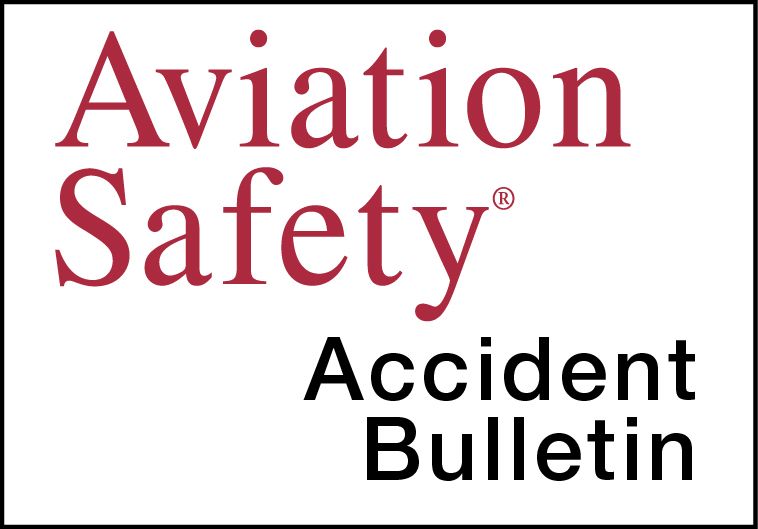AVweb’s General Aviation Accident Bulletin is taken from the pages of our sister publication, Aviation Safety magazine. All the reports listed here are preliminary and include only initial factual findings about crashes. You can learn more about the final probable cause on the NTSB’s website at www.ntsb.gov. Final reports appear about a year after the accident, although some take longer. Find out more about Aviation Safety at www.aviationsafetymagazine.com.
November 10, 2019, Goodnews Bay, Alaska
Piper PA-32R-300 Lance
At about 1845 Alaska standard time, the airplane sustained substantial damage when it impacted water shortly after takeoff. The commercial pilot and pilot-rated observer were not injured. Night visual conditions prevailed.
According to the pilot, the airplane climbed to about 300 feet after takeoff and he initiated a right turn to avoid mountainous terrain to the north. He adjusted engine power while in the turn and recalled that, although it was dark, he could see a prominent landmark in the distance.
Also during the turn, at about 500 feet MSL, he noticed the airplane was in a descent, which he attempted to arrest but the airplane did not respond. He thought that the engine wasn’t producing sufficient power because the airplane continued to descend. He rolled wings-level before the airplane impacted water about 60 feet from the shoreline. The pilot estimated that the impact occurred about 30 to 60 seconds after the descent was first noted, and there was no time to perform emergency procedures or attempt to restore power.
Weather observed about nine NM southwest of the accident site at 1856 included wind from 12 knots gusting to 20 knots, 10 statute miles visibility, broken clouds at 1600 feet and overcast clouds at 2000 feet.
November 19, 2019, St. Augustine, Fla.
Mooney M20J 201
The airplane was substantially damaged at about 0920 Eastern time during a forced landing in a marsh. The airline transport pilot sustained minor injuries; the passenger was seriously injured. Visual conditions prevailed.
While on an extended base leg, the engine began to surge, followed by total loss of engine power. The pilot performed remedial actions without success. He retracted the landing gear for better glide performance but realized the airplane would not glide all the way to the runway. The pilot subsequently performed a forced landing to the marsh about a mile short of the runway threshold.
November 17, 2019, Ogden, Utah
Piper PA-28R-180 Arrow
At about 1552 Mountain time, the airplane impacted terrain during initial climb after takeoff. The commercial pilot and the student pilot were seriously injured. The airplane sustained substantial damage. Visual conditions prevailed.
A video taken by a passing motorist showed the airplane striking a billboard and descending to the ground before coming to rest adjacent to a freeway. Numerous first responders assisted in extricating the instructor and student pilot and subsequently transporting them to a local hospital.
November 18, 2019, College Park, MD
Mooney M20M TLS/Bravo
The airplane was substantially damaged during a rejected landing at about 1625 Eastern time. The solo private pilot was not injured. Visual conditions prevailed.
The pilot later reported that winds on the approach to the 2607-foot-long, 60-foot-wide paved Runway 15 were variable but light. While recovering from an initial bounce during an attempted landing, the pilot initiated a go-around by applying full engine power and remaining in ground effect. He did not retract the landing gear because he saw no climb indication and did not engage the flap switch over concern that the flaps would retract past the takeoff setting and reduce lift. After a few seconds in ground effect with no climb and realizing remaining runway was limited, he set the airplane down to the left of the runway. The airplane struck the perimeter fence with its left wing, then head on, then with the right wing before coming to rest upright. Weather reported at the airport, at 1615, included winds from 250 degrees at five knots.
November 20, 2019, San Marcos, Texas
Beech (Raytheon) A36 Bonanza
At about 0600 Central time, the airplane collided with terrain shortly after takeoff. The solo pilot was fatally injured; the airplane was destroyed. Instrument conditions prevailed and an IFR flight plan had been filed.
The airplane was observed on radar shortly after departure, before it disappeared. A preliminary review of ATC services provided revealed the pilot received his IFR clearance and a void departure time but there was no further communication. The airplane wreckage was located about a half-mile off the departure end of Runway 8. At 0556, the airport’s automated facility recorded wind from 179 degrees at four knots, one-half-mile visibility in fog, an overcast sky at 300 feet and both temperature and dew point of 63 degrees F.
This article originally appeared in the February 2020 issue of Aviation Safety magazine.
For more great content like this, subscribe to Aviation Safety!



































